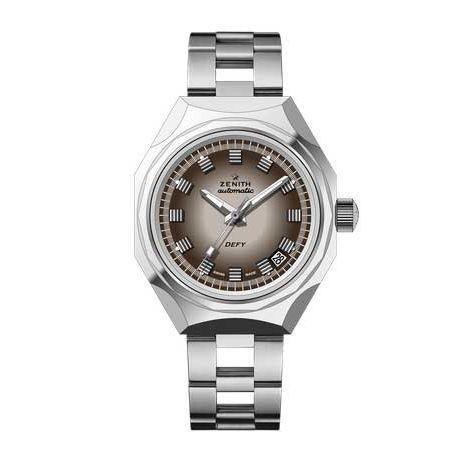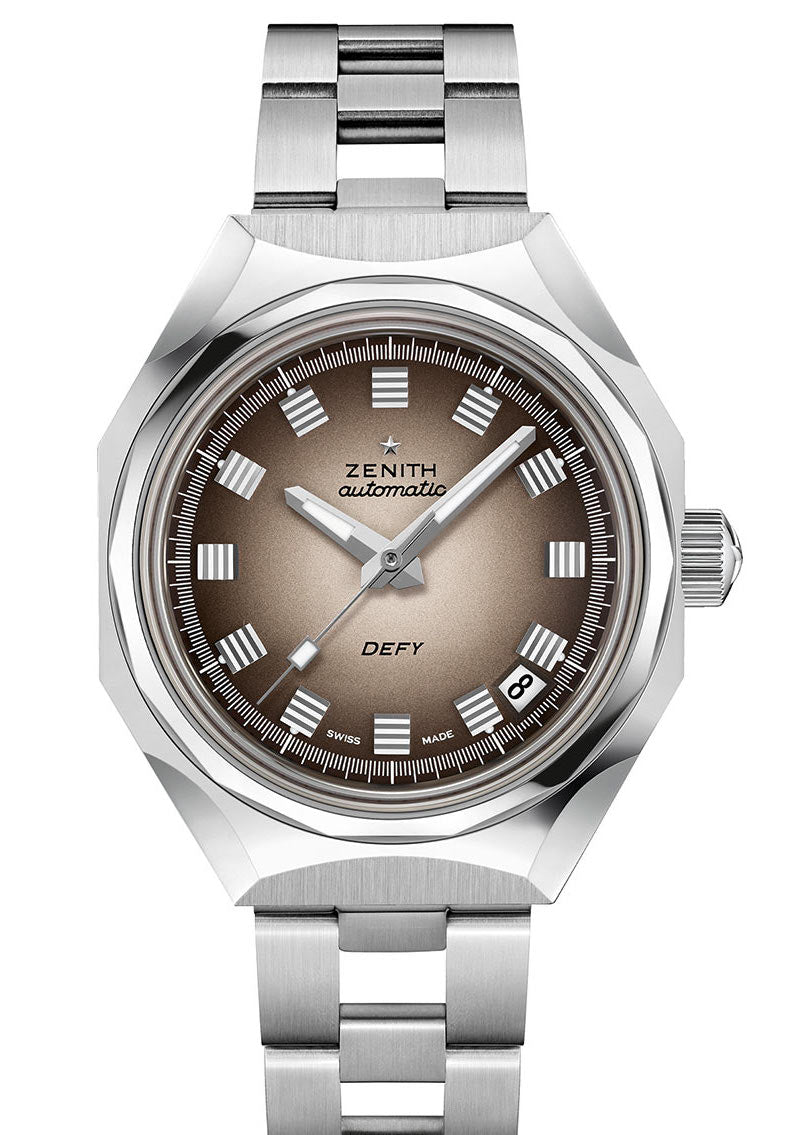

Like the original model, however, the idiosyncratic design of the Defy Revival A3642 hides an impressive level of durability, including a hefty 300 meters of water resistance. Around back, Zenith adds the second major update to the Defy Revival A3642’s design, with a sapphire display caseback showcasing the in-house movement within. The oversized screw-down pillbox crown at 3 o’clock gives a visual hint to the Defy Revival A3642’s sporting capability without falling into recognizable dive watch iconography. The 14-sided angular bezel is also shared directly with the 1969 original, but within this bezel, the brand opts for a modern sapphire crystal for greater scratch resistance.


In addition to giving this simple case layout a sense of dimension and complexity in images, these chamfers also work to add splashes of contrasting finishing with sharply brushed surfaces. The overall profile of this hooded-lug case is octagonal with sharply faceted polished surfaces, and the only curvature Zenith allows to enter this angular design is through its half-moon cut chamfers. Although these dimensions may seem compact on paper, this starkly geometric case should carry a fair amount of wrist presence through its use of form and finishing. The Zenith Defy Revival A3642 is built using the original Defy production plans from 1969, and this ultra-accurate reissue of the ‘60s original begins with an accurately sized 37mm stainless steel case.

The new limited-edition Zenith Defy Revival A3642 is a hyper-faithful revival of one of the very first Defy references, combining flamboyant faceted case design with a charismatic fumé dial treatment and fully modern build quality. While Zenith has spent the past few years reimagining early references in the El Primero catalog, the brand has kept the Defy series strictly contemporary - until now. The first, of course, is the El Primero chronograph line, but the three-hand Defy series has proven to be arguably just as enduring and influential on the brand’s lineup as its more complex stablemate. Zenith emerged from this era as one of the most visually and mechanically imaginative brands in the business, and this reputation can largely be laid at the feet of two iconic series released in 1969. As the traditional Swiss industry began to face stiff competition from affordable quartz movements and a rapidly advancing Japanese watchmaking sector, brands increasingly turned toward wild colors and imaginative sculptural forms to stand out on retailer shelves. The late ‘60s and early ‘70s were a watershed moment in luxury watch design.


 0 kommentar(er)
0 kommentar(er)
